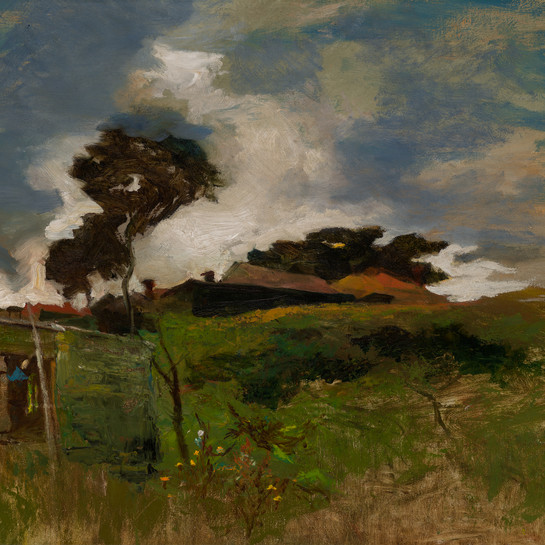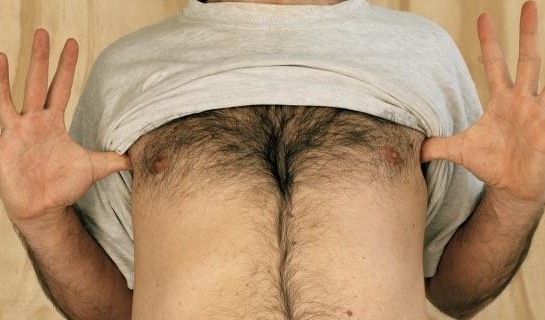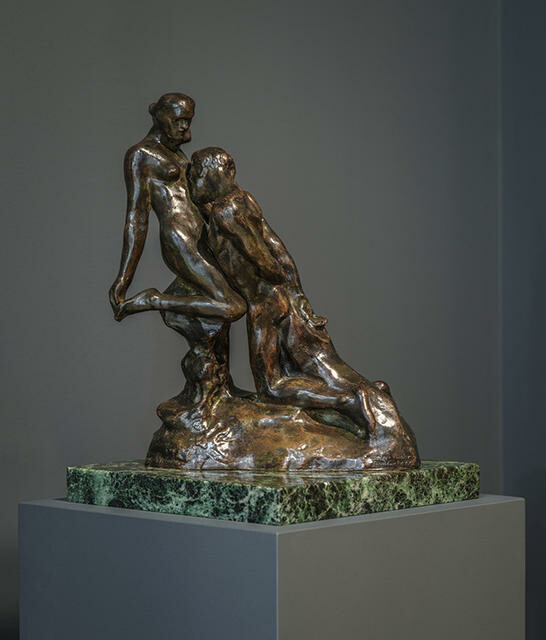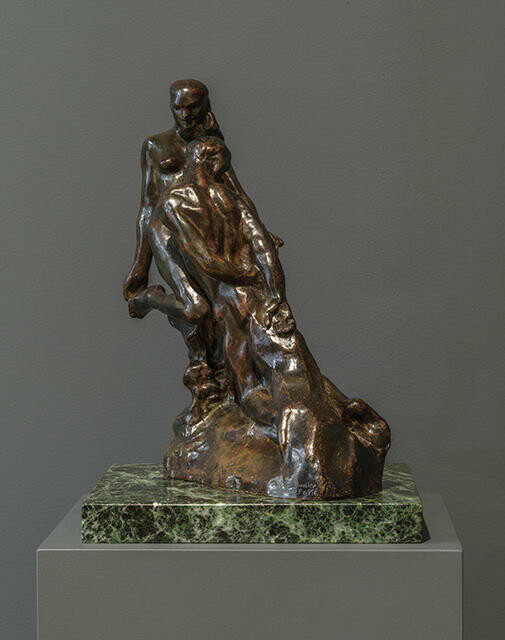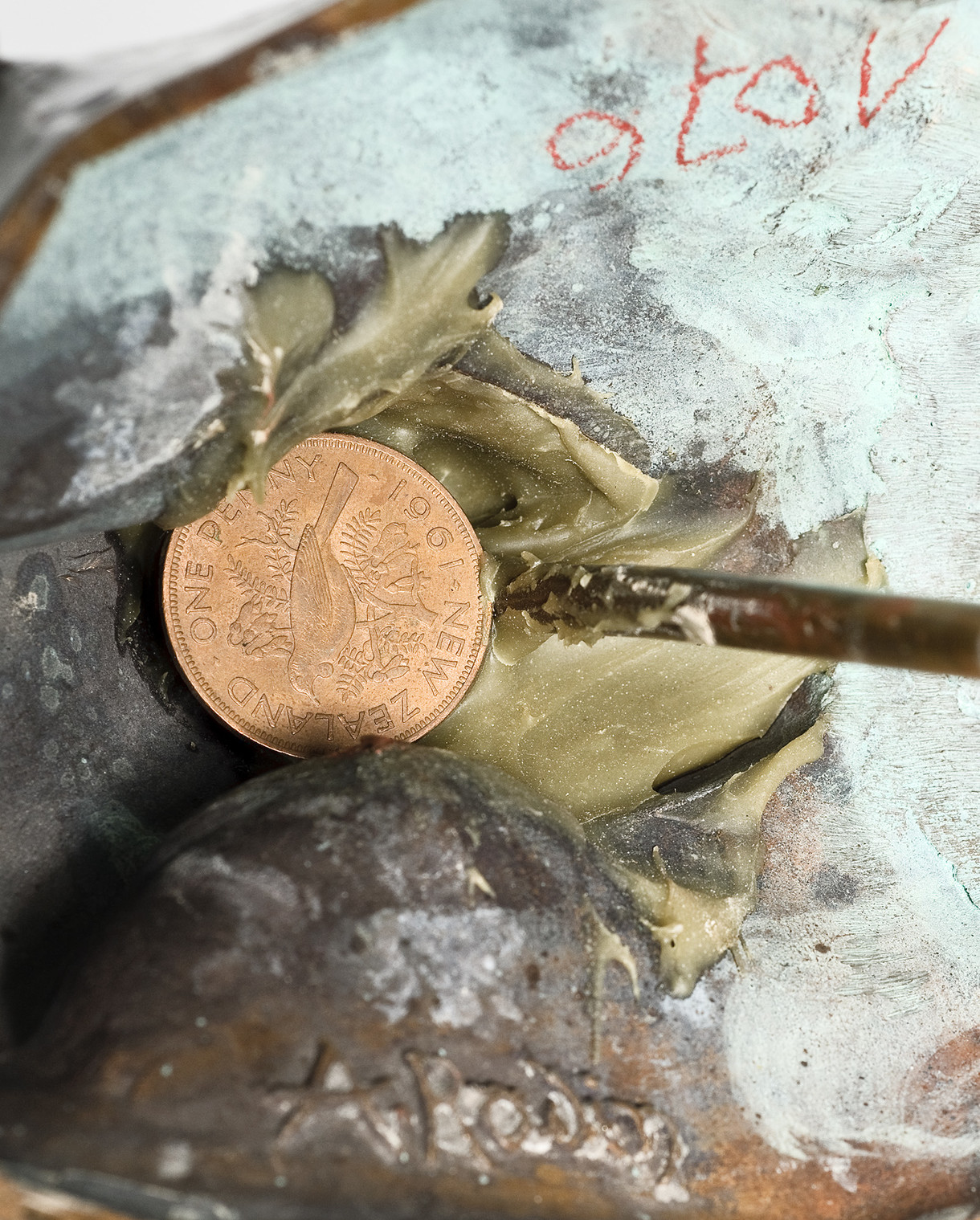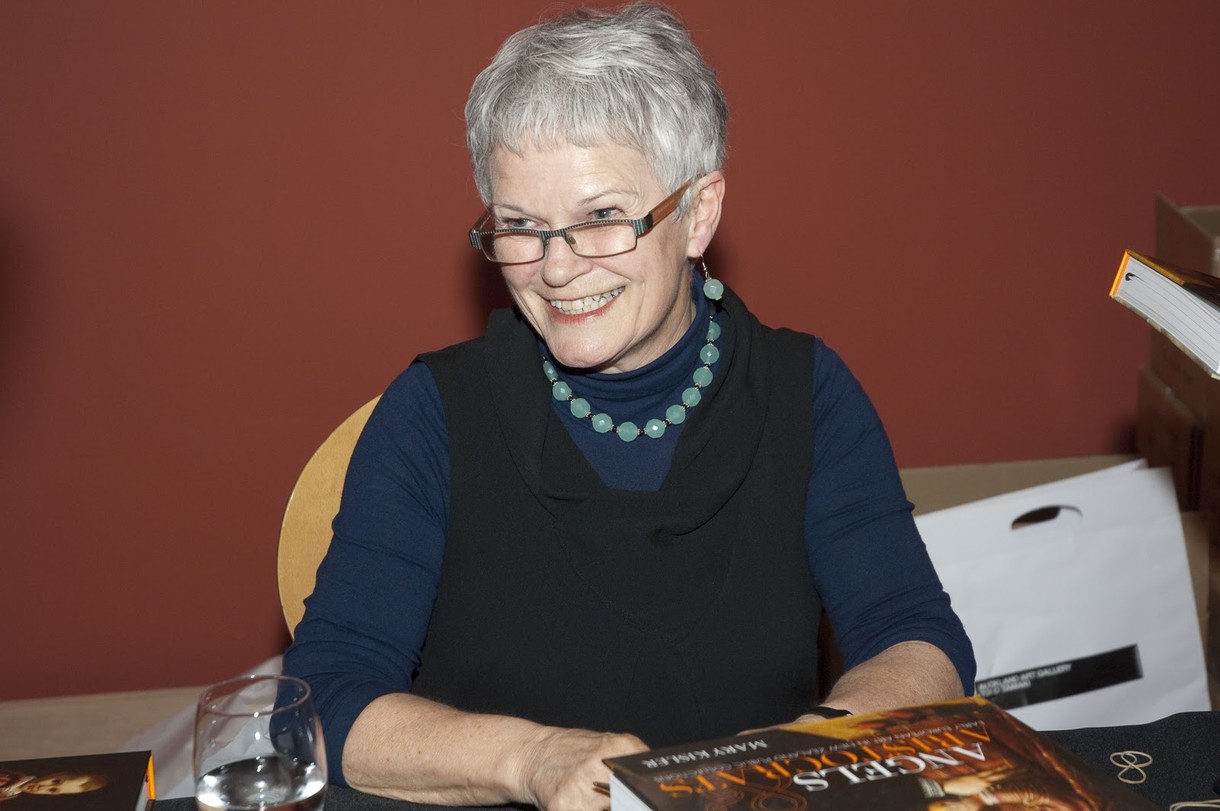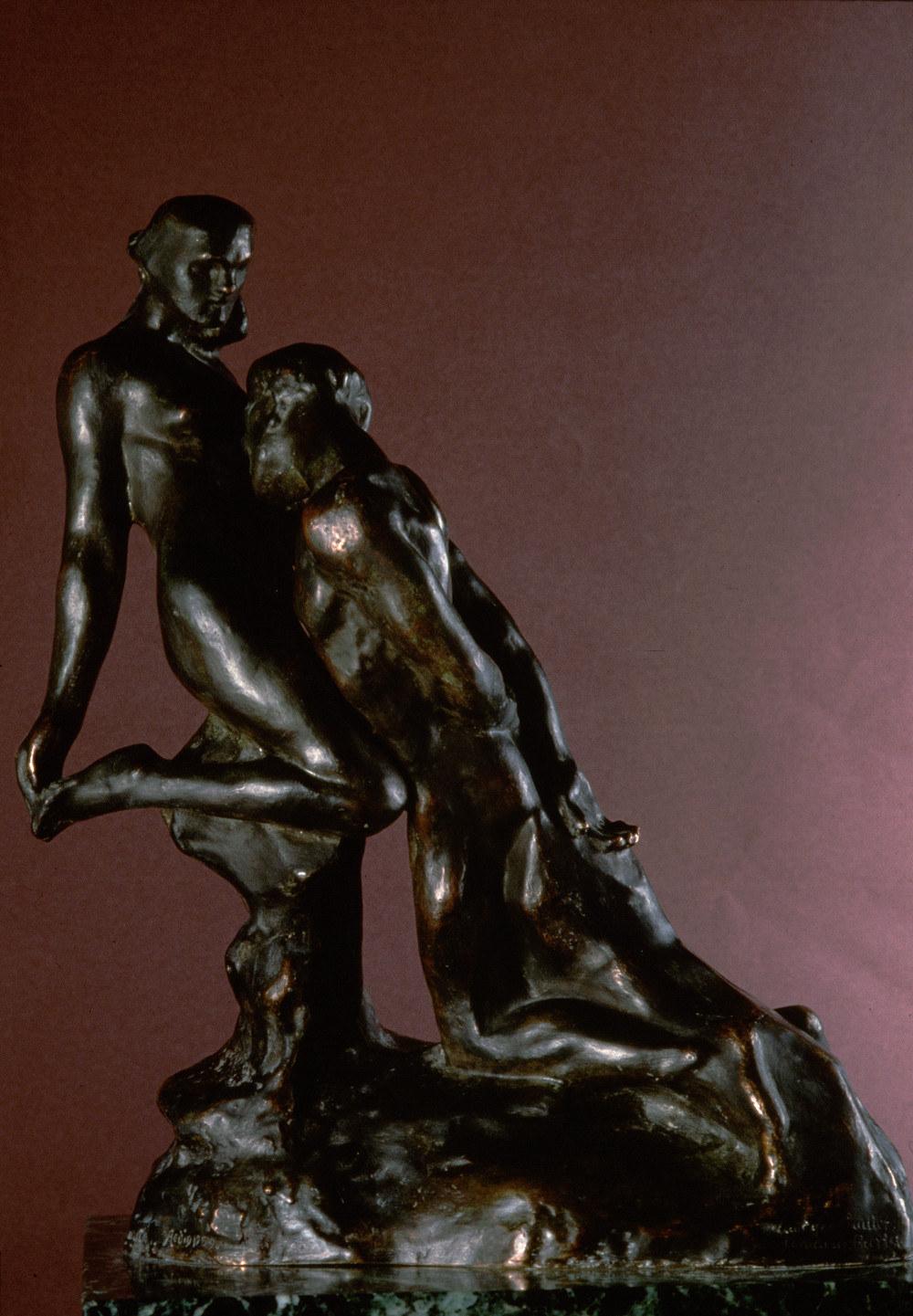Auguste Rodin
France, b.1840, d.1917
Eternal Idol
- 1959
- Bronze
- Presented by the New Zealand Government from the New Zealand Fund in France For Cultural Development, 1964
- 320 x 228 x 228mm
- 69/527
Tags: figures (representations), love, men (male humans), nudes (representations), people (agents), women (female humans)
The embracing couple was a motif sculptor August Rodin returned to throughout his career. Here, a man adopts a posture of ardent reverence, kissing a woman on the stomach while kneeling with his arms held behind him. She appears to pull him closer with one hand, while the other touches her own lifted foot. This fluid bronze embodies the values of the Romantic movement of the nineteenth century, which emphasised sensual impact and personal expression. The apparent mutuality of attraction and power balance expressed here can be contrasted with how heterosexual couples were often depicted in the classical art tradition, with female figures as passive muses or powerless victims of sexual aggression.
(Perilous: Unheard Stories from the Collection, 6 August 2022- 21 July 2024)
Exhibition History
[New Dawn Fades, 10 November 2018 – 23 February 2020] (https://christchurchartgallery.org.nz/exhibitions/new-dawn-fades)
One of the most significant sculptors of his generation, Auguste Rodin revelled in the tactile qualities of the clay or wax he used to form the sculptures from which his castings were taken. The human body was of great interest to Rodin and here he explores the sensuality and intimacy of the lovers’ forms. Rodin completed several versions of this subject in varying mediums and sizes.
(New Dawn Fades, November 2018)
Auguste Rodin used the human figure as an instrument of expression, rather than as an object for anatomical study. The two figures in Eternal Idol express their intimacy and complete absorption in each other. The work, like all his sculptural figures, displays great strength, gentleness and sensuality. Rodin became one of the most celebrated sculptors of the 19th century. He broke from the rigid formulas and styles of academic sculpture, introducing a new sense of energy, imagination and invention. Born in Paris, Rodin showed promise in drawing as a child but was rejected by the École des Beaux-Arts and started working as a moulder, ornamentor and goldsmith instead. He later took lessons from the animal sculptor, Antoine-Louis Barye (1796 -1875), and studied the work of Donatello (c.1386-1466) and Michelangelo (1475 -1564). By 1880 he had become renowned for his sculptural portraits of famous contemporary figures. Rodin’s fame as a sculptor grew and in 1882 a studio was freely placed at his disposal by the state.
(Gallery opening hang, 2003)
Rodin made several versions of this subject in varying sizes and materials. It was first worked in 1889 and is thought to have been inspired by a sculpture by Camille Claudel entitled "Surrender". This work emphasised Rodin's joy in the human form and in human sensuality. The two figures express their itimacy and complete absorption in each other. To this artist this interaction parallels an act of worship and he gave this composition an alternative title as 'The Host' suggesting that the physical act of adoration can also ascend to the mystical or spiritual planes of meaning. Rodin's figures all displayed great strength, gentleness or sensuality. He said: "I have invented nothing - I have only rediscovered."
Rodin, who was born in Paris, showed his ability at an early age and persevered through early difficulites to gain entry to the Ecole des Beaux Arts. In 1875 he visited Italy where he studied the works of Donatello and Michelangelo whose influences can be seen in Eternal Idol. By 1882 his fame as a sculptor had grown and a pavillion was dedicated to his work at the 1900 Exposition.
The foundry of George Rudier handled most of his bronze casting including the work. Limited edition castings were made in 1960 after Rodin's death from waxes held by the Rodin Museum in Paris. This work was purchased from those works in 1962 by the New Zealand Government and presented to the Gallery in 1964.

